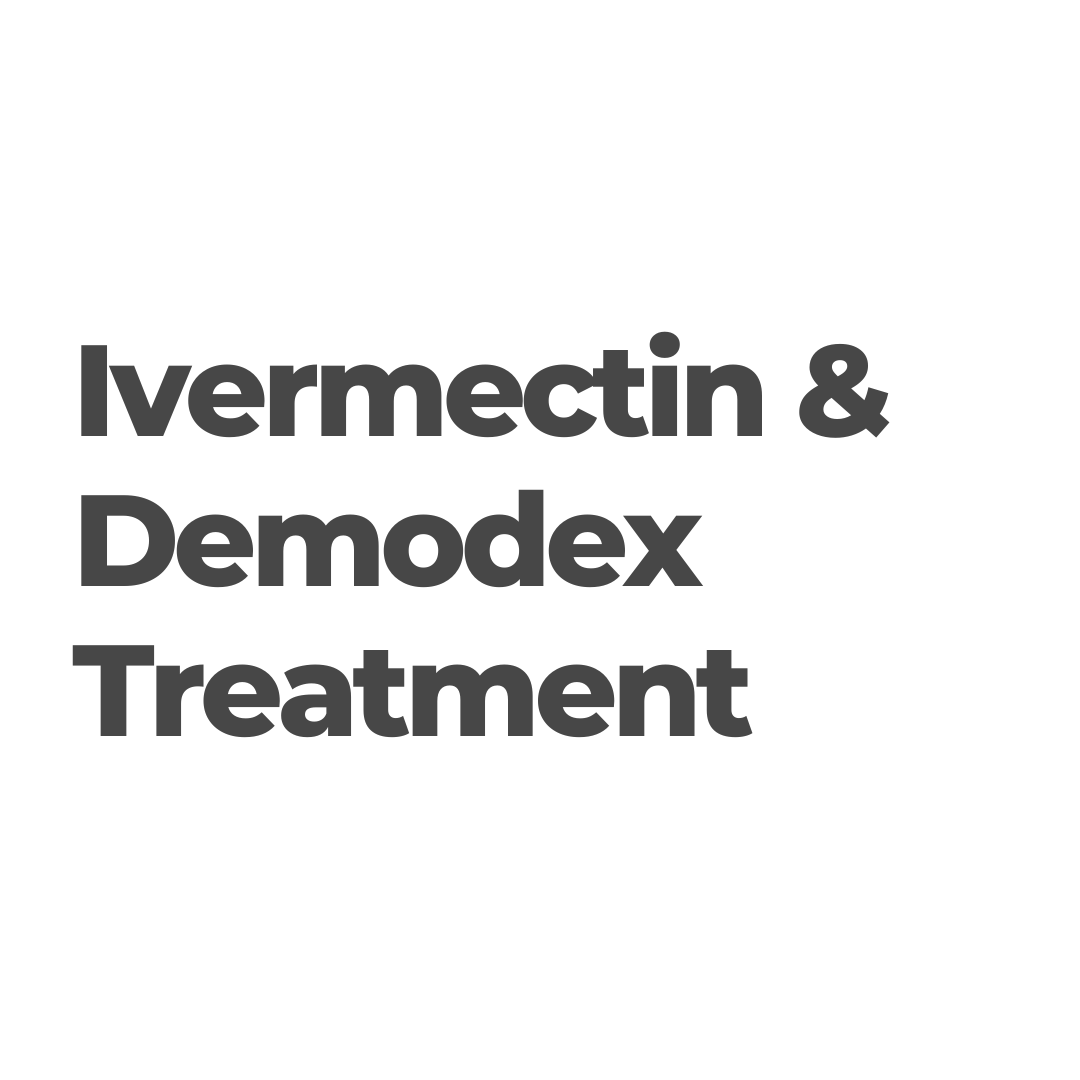Topical ivermectin 1.0% cream in the treatment of ocular demodicosis
This article investigates the efficacy of topical ivermectin 1.0% cream in treating ocular demodicosis, a condition caused by the proliferation of Demodex mites on the ocular surface.
Demodex Mite Types
Demodex blepharitis refers to a common form of blepharitis that involves a Demodex mite infestation. Two primary types of Demodex mites are known to inhabit humans:
- Demodex folliculorum is primarily found at the base of the eyelashes and eyelash follicles (anterior blepharitis). They feed on epithelial cells around the hair follicles, which may also cause trichiasis (inward deviation of eyelashes) or madarosis (eyelash loss).
- Demodex brevis burrow into the meibomian glands, which are modified sebaceous glands, where the feed upon meibum (posterior blepharitis). This burrowing physically obstructs the gland orifices leading to meibomian gland hyperplasia and meibomian gland dysfunction, with blockage further exacerbated by the accumulation of the mites’ waste.
Demodex mites, symbiotic inhabitants of human hair follicles and sebaceous glands, are generally harmless. However, their overpopulation in the eyelids and eyelashes has been linked to severe skin conditions such as rosacea, seborrheic dermatitis and acne vulgaris and ocular diseases. Ocular demodicosis, characterized by symptoms like blepharitis and dry eye disease, poses diagnostic challenges.
Ivermectin
Recent studies focus on targeted interventions, such as ivermectin, an antiparasitic drug approved for rosacea-associated Demodex infestation.
Topical ivermectin has demonstrated effectiveness, despite being an off-label therapy and lacking current approval for ocular application. Ivermectin exhibits a broad-spectrum anti-parasitic impact and possesses anti-inflammatory effects by reducing immune responses. However, standardized guidelines for its use are currently lacking.
Study Objectives:
The study aimed to assess the efficacy of nightly application of topical ivermectin 1.0% cream over 3 months and evaluate sustained improvements over a year. The study also used imaging analysis software for objective quantification.
It has been suggested that patients undergo a 3-month treatment to ensure they are treated during a susceptible stage in the life cycle of Demodex mites, specifically during copulation.
Methods:
The study involved 75 patients with ocular demodicosis treated with topical ivermectin 1.0% cream nightly for 3 months. Clinical assessments and digital imaging using slit lamp biomicroscopy were conducted at baseline, 3 months, and 12 months.
The exclusion criteria encompass individuals under the age of 18, pregnant or at risk of pregnancy, those with sensitivity to ingredients in the ivermectin cream, and individuals undergoing anticoagulant therapy with warfarin or Acenocoumarol, due to the potential for ivermectin to interfere with these treatments.
Results:
Side effects were minimal (2.7%).
The treatment significantly reduced ocular demodicosis signs, including collarettes, Demodex tails, and lash follicle pouting. Improvements were observed as early as the second visit and sustained up to 12 months.
Fluorescein staining severity scores, indicating ocular surface health, also improved. The study demonstrated the safety and efficacy of topical ivermectin, offering sustained benefits.
Discussion:
Collarettes, a key sign of ocular demodicosis, reduced with ivermectin treatment, validating its antiparasitic action. Reduction in Demodex tails and lash follicle pouting further supported treatment efficacy. Improvements in ocular surface health, indicated by decreased fluorescein staining severity, emphasized the potential dual impact of ivermectin in reducing inflammation and improving symptoms.
The study's limitations include its retrospective nature, suggesting the need for prospective trials and comprehensive patient-reported outcome measures.
Conclusion:
This retrospective study provides evidence of the effectiveness and safety of topical ivermectin 1.0% cream in alleviating ocular demodicosis signs and improving ocular surface health.
The sustained benefits over 12 months suggest its potential as a viable treatment option. Prospective studies, incorporating validated questionnaires and exploring optimal treatment duration, are warranted to further enhance our understanding of ocular demodicosis management.
Our Thoughts:
- The use of topical ivermectin for ocular demodicosis is off-label and not currently approved by regulatory agencies.
- A standardized approach for dosing and application of topical ivermectin is still lacking.
- Further research is needed to establish optimal treatment duration and compare different therapeutic options.






